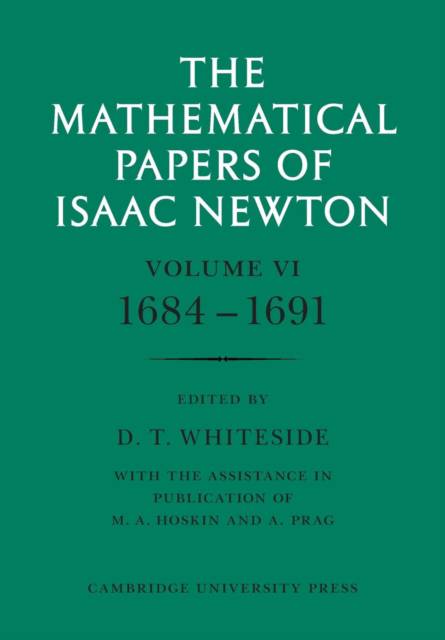
Door een staking bij bpost kan je online bestelling op dit moment iets langer onderweg zijn dan voorzien. Dringend iets nodig? Onze winkels ontvangen jou met open armen!
- Afhalen na 1 uur in een winkel met voorraad
- Gratis thuislevering in België vanaf € 30
- Ruim aanbod met 7 miljoen producten
Door een staking bij bpost kan je online bestelling op dit moment iets langer onderweg zijn dan voorzien. Dringend iets nodig? Onze winkels ontvangen jou met open armen!
- Afhalen na 1 uur in een winkel met voorraad
- Gratis thuislevering in België vanaf € 30
- Ruim aanbod met 7 miljoen producten
Zoeken
Omschrijving
This volume reproduces mathematically significant extracts from the extant manuscript record of Newton's researches during 1684-5 into the dynamical motion of bodies under the deviating action of a central force, and his subsequent struggles thereby to explain the observed motions of solar comets and of the moon. The short tract De motu Corporum, which Newton initially composed on this topic in the early autumn of 1684, was primarily built around his earlier proof that in the absence of external perturbation a planetary eclipse may be traversed under an inverse-square force pull to its solar focus, but also discussed the simplest case of resisted ballistic motion. In epilogue, excerpts from his abandoned grand scheme for revising the Principia in the early 1690s detail Newton's planned refinements to his printed exposition of central force, both simplifying and extending it, introducing therein a novel general fluxional measure of such force - but failing adequately to apply it to the primary case of conic motion.
Specificaties
Betrokkenen
- Auteur(s):
- Uitgeverij:
Inhoud
- Aantal bladzijden:
- 660
- Taal:
- Engels
- Reeks:
Eigenschappen
- Productcode (EAN):
- 9780521045858
- Verschijningsdatum:
- 11/02/2008
- Uitvoering:
- Paperback
- Formaat:
- Trade paperback (VS)
- Afmetingen:
- 170 mm x 244 mm
- Gewicht:
- 1034 g

Alleen bij Standaard Boekhandel
+ 225 punten op je klantenkaart van Standaard Boekhandel
Beoordelingen
We publiceren alleen reviews die voldoen aan de voorwaarden voor reviews. Bekijk onze voorwaarden voor reviews.











